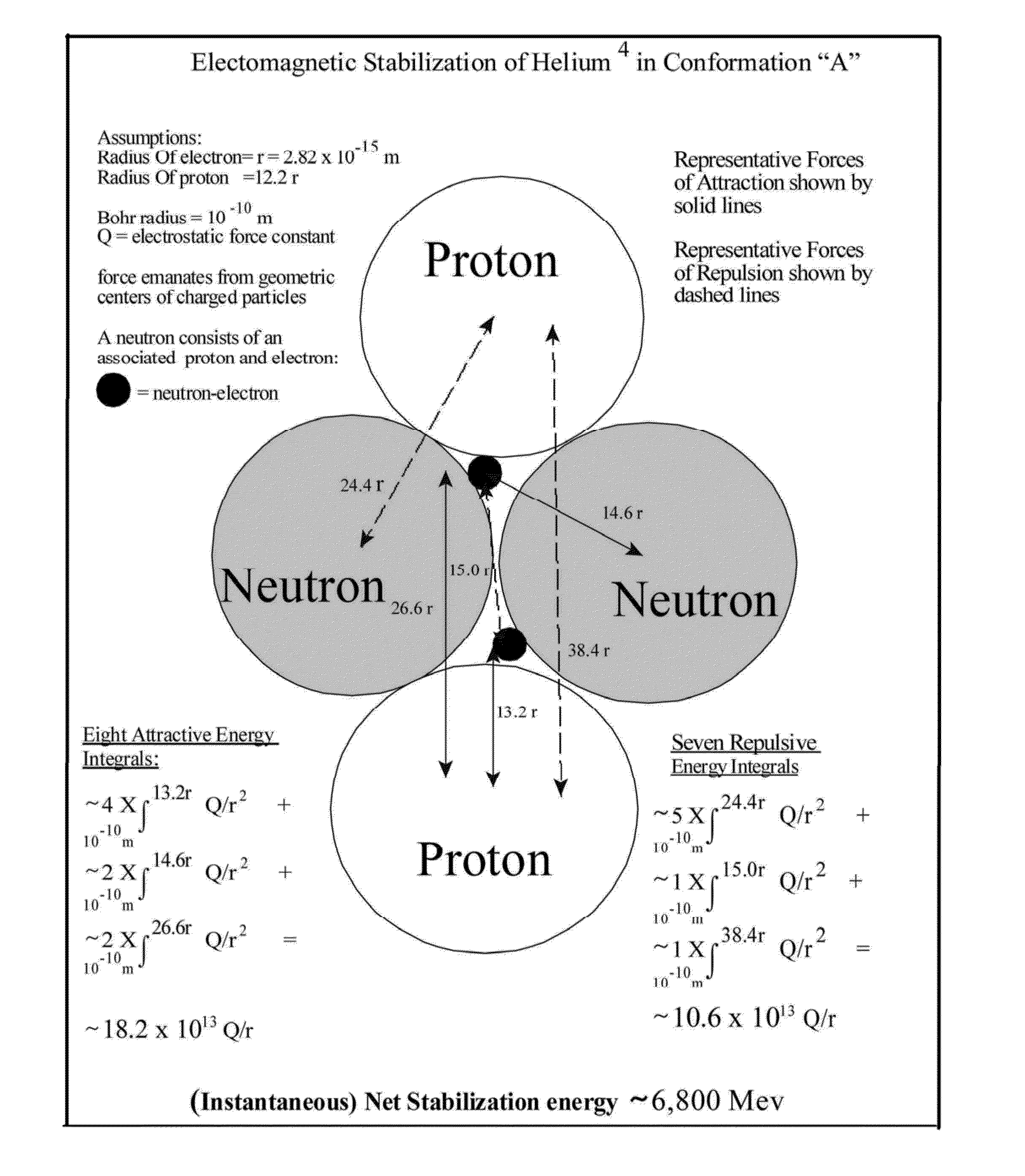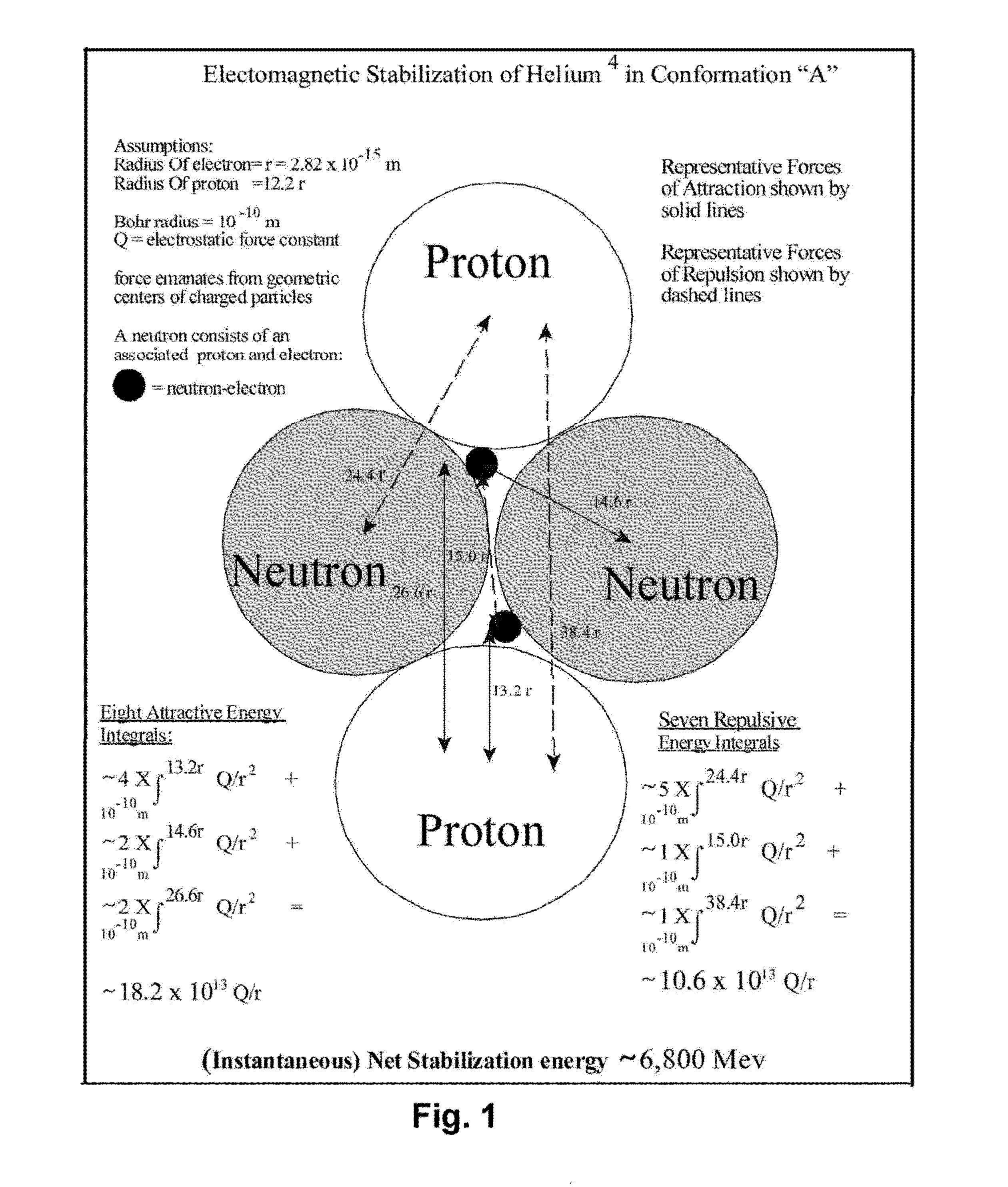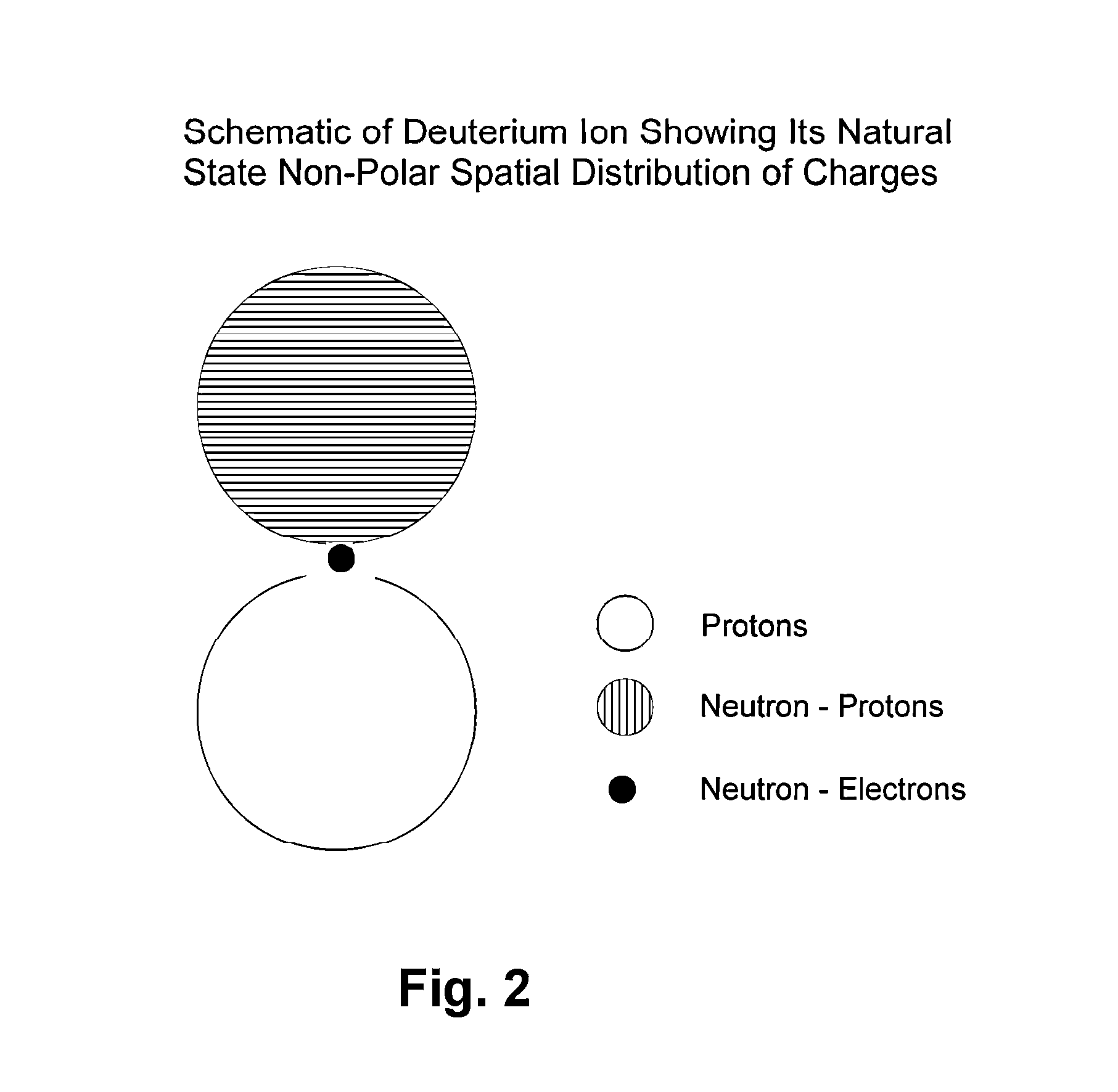Electromagnetic Element Reactor
a technology of electromagnetic elements and reactors, which is applied in nuclear reactors, nuclear engineering, greenhouse gas reduction, etc., can solve the problems of not being able to achieve mechanistically enabled theorems, no prior art methods for producing helium from gaseous deuterium have been commercialized, and not being able to isolate the target elemen
- Summary
- Abstract
- Description
- Claims
- Application Information
AI Technical Summary
Benefits of technology
Problems solved by technology
Method used
Image
Examples
Embodiment Construction
Embodiments of the Invention
[0047]Referring now to the drawings of FIGS. 1-10 which depict modes of the device 10 and method herein. The disclosed method and device 10, provides a system for impelling lower energy barrier (catalytic) electromagnetic element reactions between deuterium ions, thereby producing useful helium-4. The method herein, using a combination of coordinated forces including surface force (optionally), a single vector magnetic force, motion-related mechanical force, gas pressure flow force (or other directional physical flow) and electromotive force to achieve the reactions between deuterium ions. A representative depiction of the forces and the calculations thereof can be viewed in FIG. 1 herein which provides such calculations validating this method and apparatus along with a simple schematic allowing an easy understanding of the noted forces.
[0048]In all modes of the device 10 to enable and coordinate the method herein, two populations of deuterium are employe...
PUM
 Login to View More
Login to View More Abstract
Description
Claims
Application Information
 Login to View More
Login to View More - R&D
- Intellectual Property
- Life Sciences
- Materials
- Tech Scout
- Unparalleled Data Quality
- Higher Quality Content
- 60% Fewer Hallucinations
Browse by: Latest US Patents, China's latest patents, Technical Efficacy Thesaurus, Application Domain, Technology Topic, Popular Technical Reports.
© 2025 PatSnap. All rights reserved.Legal|Privacy policy|Modern Slavery Act Transparency Statement|Sitemap|About US| Contact US: help@patsnap.com



